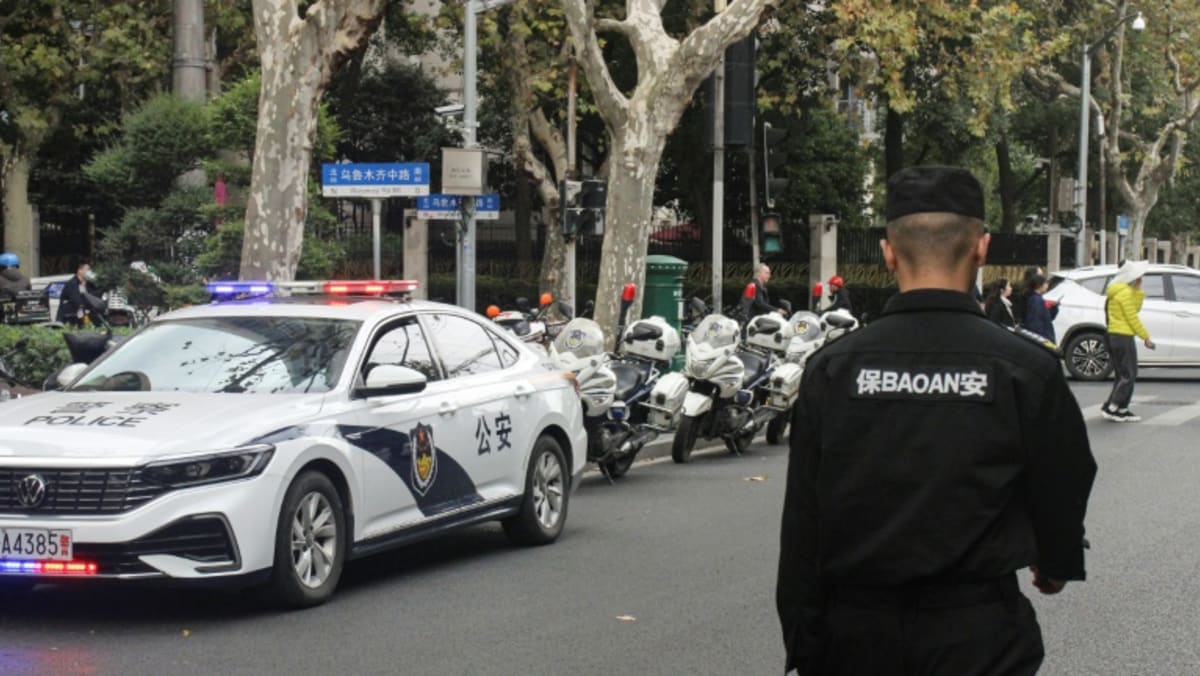
Wulumuqi is the Mandarin name for the city of Urumqi.
“When I saw so many people on that street, although I was mourning, in another way I felt safe,” she said, recalling the first night of the protests.
“The atmosphere was sad, but also empowering.”
TAKING ON THE REGIME
Protests continued in Shanghai the next day, and ignited in other major cities including Beijing, Guangzhou and Chengdu, with protesters holding aloft blank sheets of A4 paper to symbolise China’s lack of free speech.
“It was not surprising that protests would break out in response to the anti-Covid lockdowns,” the University of Toronto’s Diana Fu told AFP, noting “bread-and-butter issues” were common flashpoints in China.
“What was surprising was the blunt anti-regime rhetoric.”
Overt political protest is rare in China, a sophisticated surveillance state that punishes dissent harshly.
Li said she had been concerned about freedom of expression before, but “thought I could live with it, because it didn’t affect my everyday life”.
Covid changed everything – especially after being “trapped … like a prisoner” in the two-month Shanghai lockdown.
“People are only going to protest for their rights when it affects them. That’s why there were so many people,” she said.
At the time, Durham University’s Chenchen Zhang had suggested “there may not be overarching demand for political reform beyond ending zero-COVID”.
Fu noted the protests involved “a minority of Gen-Z and millennials” and therefore had not heralded a mass political awakening.
For those who did join though, it was “a watershed moment”, she added.
Huang Yicheng, a 27-year-old who was briefly detained on Wulumuqi Road and later fled to Germany, said those who wanted more had “shouldered a lot of pressure to change the policy of the country”.
“The social movement tide was very big – but we were stranded like fish on a sand beach” when people went back to normal after zero-COVID ended, he said.
“SO VIOLENT”
China’s security apparatus sprang into action to quash the nascent movement, from scrubbing all online mention of the protests to blanketing cities with officers.
On the second night of protests in Shanghai, Li said, police were more prepared to use force.
“They were dragging a girl into a police car – it was so violent, I keep thinking about that image,” she said.
Huang said he was dragged upside down along the pavement, losing his glasses and shoes.
In the chaos, during which he said he saw numerous women being beaten, he managed to escape without his name being taken.
Li was called to a police station a week later, and confronted with a picture of herself at the protest.
“They asked me to describe what I did and why I was there … in a lot of detail,” she said.
William Nee, analyst for NGO Chinese Human Rights Defenders, said he estimated more than 100 people had been taken in or detained across the country after the protests.
He told AFP he believed most had now been released, except for 19-year-old Uyghur student Kamile Wayit.
Human Rights Watch recently called for her release, along with that of Peng Lifa, who in October 2022 unfurled an anti-government banner across a Beijing bridge.
The Ministry of State Security did not respond to AFP queries about the protests, including about those still detained.
“BREAKING THE NORM”
Huang and Li both attributed zero-COVID’s end to the demonstrations, though the extent to which they were responsible for the U-turn is unclear.
“The longer-term impact is in breaking the norm of protest rhetoric,” said Fu.
“Previously, protesters would cloak their demands in economic terms and refrain from directly pointing the finger at Beijing.”
The impact on individuals is more tangible.
Li said some of her friends had left China and planned on never coming back.
Huang, too, will not return until he considers it safe.
For those who have spoken out, he said, “we can never go back to normal as before”.
